Middle school represents a pivotal educational phase where students develop academic identities, social skills, character qualities, and relationships that shape their future trajectories. During these critical years, recognition powerfully influences motivation, self-esteem, peer relationships, and connections to school communities.
Yet many middle schools struggle with recognition systems that feel outdated, exclusive, or disconnected from students’ digital-native experiences. Static bulletin boards gather dust in hallways, paper certificates get lost in backpacks, and recognition feels reserved for the same small group of high-achieving students.
Digital recognition boards revolutionize how middle schools celebrate students by providing engaging, inclusive, constantly-updated platforms that honor diverse achievements across academics, character, athletics, arts, service, and positive behavior. These interactive displays capture student attention, create shared pride, and build positive school cultures where all students feel valued.
This comprehensive guide explores how middle schools can implement digital recognition boards effectively, examining content strategies, age-appropriate approaches, implementation planning, budget considerations, and proven practices for maximizing student engagement and developmental impact.
Why Recognition Matters Especially in Middle School
Middle school coincides with significant developmental changes making recognition particularly influential during this phase.
The Developmental Context of Early Adolescence
Students typically enter middle school between ages 10-12 and graduate around ages 13-15, a period characterized by profound physical, cognitive, social, and emotional changes. Early adolescence brings:
Identity Formation: Students actively explore who they are, what they value, and where they fit. Recognition validates emerging identities and provides feedback about valued qualities and achievements. Positive recognition helps students develop healthy self-concepts while negative feedback or lack of recognition can undermine self-esteem during this vulnerable period.
Peer Relationship Centrality: Peer relationships become increasingly important during middle school, often rivaling or surpassing adult relationships in influence. Public recognition affects social status, peer perceptions, and belonging within peer groups. Recognition systems that celebrate diverse achievements help create inclusive peer cultures valuing multiple paths to success.
Motivation and Engagement: Middle school often sees declining academic motivation and engagement as students question relevance and purpose. Recognition that connects achievement to meaningful outcomes helps sustain motivation. Seeing peers recognized for various accomplishments creates aspirational models demonstrating that effort leads to valued recognition.
Belonging and School Connection: Students who feel connected to schools demonstrate better academic outcomes, behavior, attendance, and mental health. Recognition creates belonging by communicating that schools notice students, value their contributions, and celebrate their successes. Digital recognition boards make this appreciation highly visible and enduring.
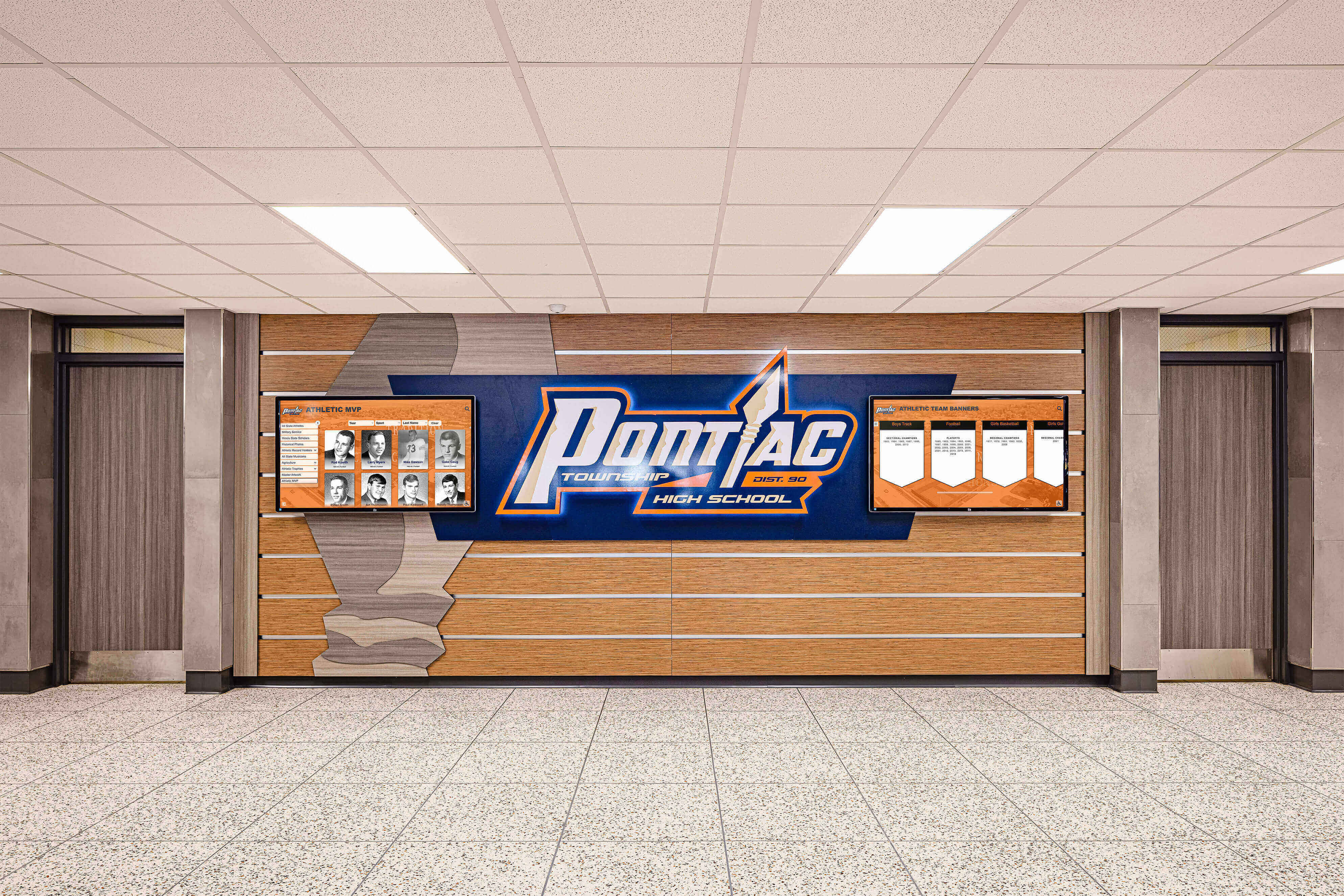
Academic Impact of Recognition Programs
Research consistently demonstrates connections between recognition, motivation, and academic performance. Studies show that students receiving consistent recognition demonstrate:
- Higher academic self-efficacy believing they can succeed
- Greater engagement with learning activities
- Improved persistence when facing academic challenges
- Stronger connections between effort and outcomes
- Enhanced intrinsic motivation beyond grades alone
Recognition proves particularly powerful for students from disadvantaged backgrounds who may receive limited positive feedback outside school contexts. For these students, school recognition provides crucial validation influencing academic identity formation.
Social-Emotional Development Benefits
Beyond academics, recognition supports healthy social-emotional development:
Self-Esteem and Confidence: Authentic recognition for genuine achievements builds self-esteem grounded in actual competence rather than empty praise. Middle school students particularly need affirmation during periods of significant self-doubt and comparison to peers.
Character Formation: Recognizing character qualities—integrity, kindness, perseverance, leadership, responsibility—reinforces these values while providing concrete examples of character in action. Character recognition helps students understand that who they become matters as much as what they accomplish.
Resilience and Growth Mindset: Recognition emphasizing improvement and effort rather than just absolute achievement fosters growth mindsets. Celebrating students who overcame obstacles or demonstrated significant progress validates persistence and resilience.
Social Skills and Citizenship: Recognition for positive peer interactions, community contributions, and citizenship behaviors reinforces prosocial development. Public acknowledgment of students demonstrating exemplary citizenship creates social norms valuing positive behavior.
Understanding Digital Recognition Boards for Middle Schools
Digital recognition boards combine large-format touchscreen displays with specialized software designed to showcase student achievements in engaging, interactive formats.
What Are Digital Recognition Boards?
Digital recognition boards typically consist of:
Display Hardware: Large touchscreen displays (usually 43-75 inches) mounted in high-traffic areas like main entrances, cafeterias, media centers, or common spaces. Commercial-grade displays ensure reliability for continuous operation in school environments.
Interactive Interface: Touch-sensitive technology enabling students, staff, and visitors to actively explore recognition content by browsing categories, searching for specific students, viewing profiles, and discovering achievements. Intuitive navigation requires no technical expertise—users interact as naturally as with smartphones or tablets.
Recognition Software: Purpose-built platforms designed for managing recognition content including student profiles, achievement categories, photos, videos, and supporting information. Quality software provides easy content updates, customizable designs matching school branding, and reporting features tracking engagement.
Content Management System: Backend systems allowing authorized staff to add, edit, and organize recognition content without technical expertise. User-friendly content management ensures displays remain current without requiring IT department involvement for every update.

Key Features for Middle School Recognition
Diverse Achievement Categories: Effective middle school recognition boards celebrate accomplishments across multiple domains:
- Academic excellence and improvement
- Character and citizenship
- Athletic achievements
- Fine and performing arts
- Service and community involvement
- Attendance and positive behavior
- Leadership and peer mentoring
- Special interests and talents
Student Profiles: Individual student profiles provide comprehensive recognition beyond single achievements. Profiles can include photos, grade level, interests, multiple achievements across categories, personal statements, and teacher or peer comments celebrating the student’s contributions.
Interactive Exploration: Unlike static bulletin boards, interactive displays allow users to browse by achievement category, search for specific students, filter by grade level or time period, view detailed achievement descriptions, and discover recognition stories through engaging multimedia content.
Real-Time Updates: Digital platforms enable immediate recognition when achievements occur rather than waiting for monthly assemblies or printed newsletters. Timely recognition maximizes motivational impact while demonstrating that schools notice and value student accomplishments immediately.
Multimedia Content: Digital boards support rich content types beyond static text:
- Professional photographs of recognized students
- Video clips from performances, competitions, or award ceremonies
- Audio recordings of student reflections
- Digital certificates and awards
- Achievement statistics and progress over time
- Teacher and peer testimonial quotes
Advantages Over Traditional Recognition Methods
Traditional middle school recognition approaches face significant limitations that digital boards overcome:
Traditional Bulletin Boards: Physical bulletin boards provide limited space, require manual updates consuming significant time, display only basic information, become outdated quickly, and are easily ignored by students accustomed to digital engagement. Paper-based displays also deteriorate, creating unprofessional appearances.
Monthly Assemblies: Recognition assemblies interrupt instructional time, create scheduling challenges, provide brief moments that lack lasting visibility, often recognize the same students repeatedly, and make students uncomfortable with large-group public recognition.
Paper Certificates: Printed certificates sent home with students often get lost, lack visibility to broader school community, provide no interactive engagement, feel impersonal and generic, and communicate minimal information about achievements.
Social Media Recognition: While valuable for external communication, social media recognition reaches limited audiences, raises privacy concerns, provides ephemeral visibility, and excludes community members not active on specific platforms.
Digital recognition boards address these limitations by providing permanent, highly visible, easily updated, engaging platforms that celebrate diverse achievements while creating lasting records of student success accessible to entire school communities.
Solutions like digital recognition displays transform traditional recognition approaches into dynamic, inclusive systems that resonate with middle school students while building positive school culture.
Essential Content for Middle School Recognition Boards
Compelling content transforms digital recognition boards from impressive technology into meaningful systems that genuinely impact student motivation and school culture.
Academic Recognition Categories
Academic achievement forms the core of educational missions, making scholarly recognition essential for any middle school recognition program.

Honor Roll Recognition: Feature students achieving academic excellence each marking period. Consider multiple honor roll tiers (superintendent’s list, principal’s list, honor roll) ensuring recognition opportunities for students at different achievement levels. Include student photos, grade level, and brief profiles celebrating their dedication.
Academic Improvement: Celebrate students demonstrating significant grade improvement even if they haven’t reached honor roll status. Improvement recognition validates effort and growth, particularly meaningful for students overcoming learning challenges or rebuilding from academic setbacks. Highlight improvement stories showing that progress matters as much as absolute achievement levels.
Subject Excellence: Recognize outstanding achievement in specific subjects—mathematics, science, language arts, social studies, foreign languages, arts, technology, physical education. Subject-specific recognition validates diverse academic strengths while providing recognition opportunities for students who may not achieve across-the-board honors.
Academic Competitions: Celebrate students participating in or winning academic competitions: spelling bees, math competitions, science fairs, geography bees, writing contests, robotics competitions, debate tournaments. Competition recognition demonstrates that academic pursuits extend beyond grades into exciting challenges and achievements.
Perfect Attendance: Acknowledge students maintaining excellent or perfect attendance. Attendance recognition reinforces its importance while celebrating students’ commitment and families’ support in ensuring consistent school attendance.
Reading Achievements: For middle schools emphasizing literacy, recognize reading milestones: books read, reading level advancement, participation in reading programs, or completion of reading challenges. Reading recognition validates this foundational skill’s importance.
Character and Citizenship Recognition
Middle school represents crucial years for character development, making character recognition particularly valuable.
Monthly Character Awards: Establish character award categories aligned with school values: integrity, responsibility, respect, kindness, perseverance, courage, leadership, or citizenship. Feature different students monthly demonstrating exemplary character in each category, with specific examples of character in action. Detailed recognition stories help other students understand what character looks like practically.
Positive Behavior Recognition: Celebrate students demonstrating consistently positive behavior, following expectations, treating others respectfully, and contributing to positive classroom environments. Consider adapting PBIS (Positive Behavioral Interventions and Supports) frameworks where digital recognition reinforces school-wide positive behavior systems.
Peer Recognition: Enable students to nominate peers for recognition related to kindness, helpfulness, friendship, or positive impact. Peer recognition proves particularly meaningful during middle school when peer relationships hold such significance. Establish appropriate nomination processes preventing popularity contests while enabling authentic peer appreciation.
Service and Volunteering: Honor students contributing volunteer hours, participating in service projects, or demonstrating commitment to community improvement. Service recognition reinforces that contributing to communities beyond oneself represents valued behavior. Track cumulative service hours across school years, celebrating milestone achievements.
Conflict Resolution and Peacemaking: Recognize students who resolve conflicts peacefully, mediate between peers, or contribute to positive climate. Peacemaking recognition validates these often-invisible contributions while modeling constructive conflict resolution for other students.
Athletic and Physical Achievement
Athletic recognition remains highly visible in most middle schools, making comprehensive, equitable athletic recognition essential.
Team Recognition: Celebrate team achievements: championships, tournament appearances, winning records, or significant victories. Team recognition builds school spirit while honoring collective accomplishments. Feature complete team rosters ensuring all members receive recognition regardless of playing time or position.
Individual Athletic Excellence: Recognize students achieving individual athletic milestones: conference awards, most valuable player honors, school record performances, or all-conference selections. Digital record boards provide dynamic platforms for documenting and celebrating athletic excellence.
Multi-Sport Participation: Honor students participating in multiple sports programs throughout the year. Multi-sport recognition validates well-rounded athletic participation rather than single-sport specialization while acknowledging significant time commitment and versatility.
Sportsmanship Awards: Not all athletic recognition should focus on winning. Celebrate sportsmanship, leadership, perseverance through injury, improvement, and positive team contributions. Character-based athletic recognition reinforces that sports develop human qualities beyond competitive success.
Intramural and Recreational Participation: Recognize students participating in intramural programs, recreational leagues, or physical activity challenges even if they don’t compete on school teams. Inclusive athletic recognition validates diverse ways students engage in physical activity and healthy competition.
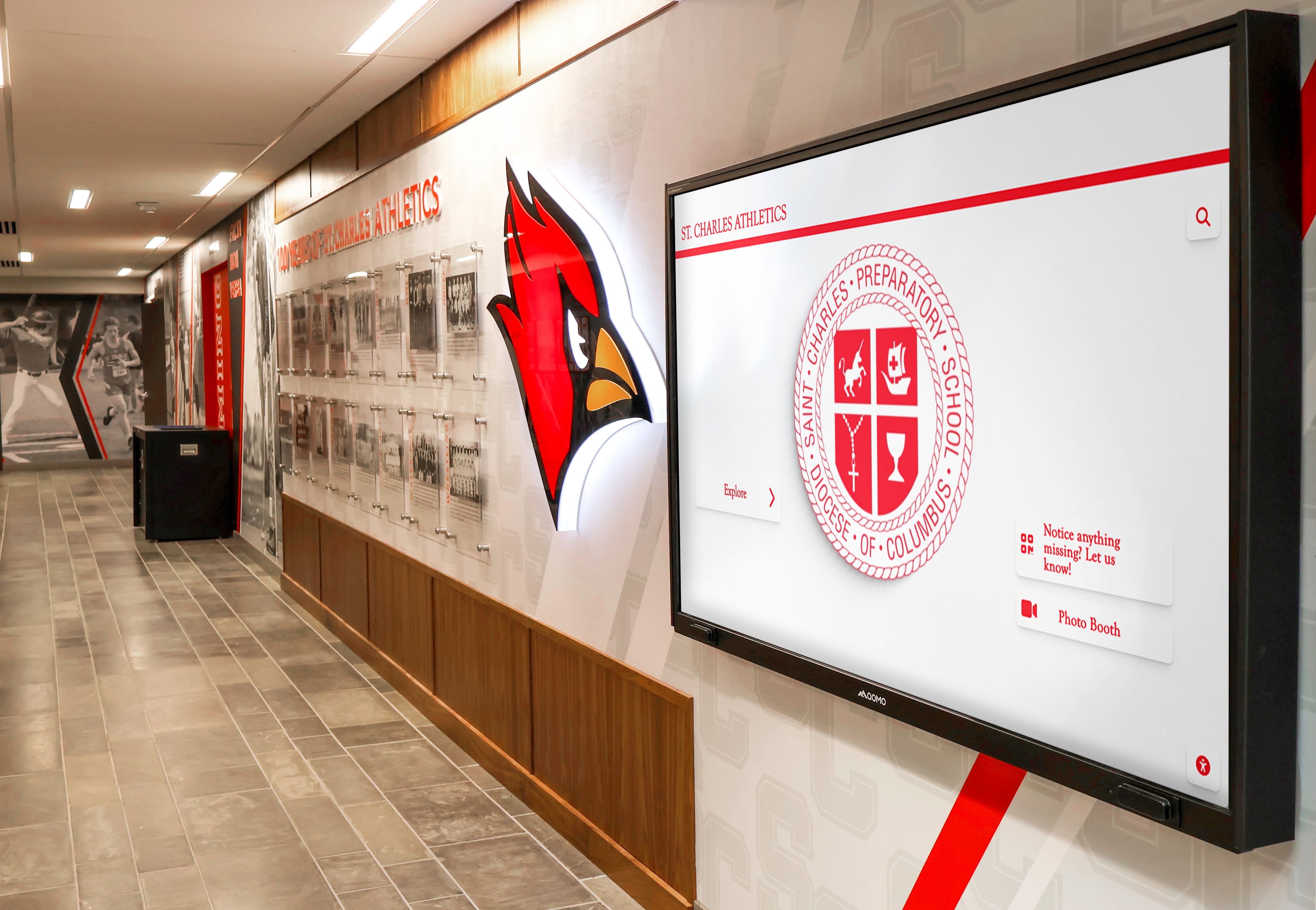
Fine Arts and Performing Arts Recognition
Middle school students exploring creative talents deserve recognition equal to academic and athletic achievers.
Concert and Performance Recognition: Celebrate students performing in band, choir, orchestra, theater productions, dance performances, or talent shows. Feature performance photos, program excerpts, and recognition of exceptional performances. Consider creating video clips from performances embedded in digital displays.
Visual Arts Achievement: Showcase student artwork through digital gallery features. Rotate highlighted artists regularly ensuring many students receive featured recognition. Include artist statements where students describe their creative process or inspiration. Photography, sculpture, painting, drawing, digital art, and other media all deserve celebration.
Competition and Festival Success: Honor students and ensembles earning superior ratings at competitions, gaining admission to honor ensembles, or receiving recognition at arts festivals. External validation reflects well on programs and individual students while deserving prominent acknowledgment.
Arts Leadership: Recognize student leaders in arts programs: section leaders in band, student directors in theater, student curators for art shows, or peer mentors helping younger arts students. Leadership recognition validates contributions beyond individual performance.
Creative Writing and Journalism: Celebrate student writers and journalists: school newspaper contributors, literary magazine publications, poetry or essay contest winners, or students whose creative writing demonstrates exceptional quality. Written arts deserve equal recognition alongside visual and performing arts.
Special Recognition Categories
Beyond standard achievement areas, consider special recognition categories particularly meaningful in middle school contexts:
New Student Welcome: Feature new students joining your school, helping them feel immediately welcomed while helping peers learn about new community members. New student recognition communicates that everyone belongs and every addition to the school community matters.
Birthday Recognition: Simple birthday acknowledgments create positive moments while ensuring every student receives some individual recognition. Birthday features provide recognition opportunities for students who may not achieve other recognition categories while demonstrating that school communities notice and celebrate each individual.
Student Interests and Talents: Showcase unique student interests, hobbies, or talents outside traditional academic domains: robotics, coding, creative pursuits, entrepreneurship, gaming, collecting, specialized knowledge areas, or community involvement. Interest-based recognition validates that schools value students holistically, not just for standardized achievement categories.
Student Voice Features: Regularly feature student perspectives, goals, reflections, or recommendations. Student voice content positions students as knowledge holders and community contributors rather than passive recipients, while providing insight into student experiences and perspectives.
Implementation Planning for Middle Schools
Successful digital recognition board implementation requires thoughtful planning addressing location, hardware, content development, and ongoing management specific to middle school environments.
Selecting Optimal Locations
Location dramatically influences display visibility, engagement, and impact in middle school buildings.
High-Traffic Middle School Locations:
- Main entrance lobbies where students, staff, and visitors pass daily during arrival and dismissal
- Cafeteria or commons areas where students gather during lunch and before/after school
- Near main office where parents visit for check-in, check-out, and meetings
- Media center or library serving as information and gathering hub
- Gymnasium lobby where students pass for PE classes and athletic events
- Main hallway intersections with heavy foot traffic between classes
Middle School Location Considerations: Middle school students move through buildings differently than elementary or high school students. Consider:
- Areas where students naturally congregate during transitions
- Locations visible during dismissal when parents often wait for students
- Spaces where students have brief waiting time (outside cafeteria before lunch, outside classrooms before entry)
- Proximity to areas where recognition relates (athletic recognition near gym, arts recognition near arts wing)
- Adequate stopping space where multiple students can gather without blocking traffic flow
- Supervision sight lines ensuring staff can monitor student interactions with displays
Multi-Display Strategies: Larger middle schools may benefit from multiple displays in different locations, potentially organized by:
- Grade level (6th grade wing, 7th grade wing, 8th grade wing)
- Achievement domain (academics, athletics, arts, character)
- School teams or houses if organized that way
- Different buildings on multi-building campuses
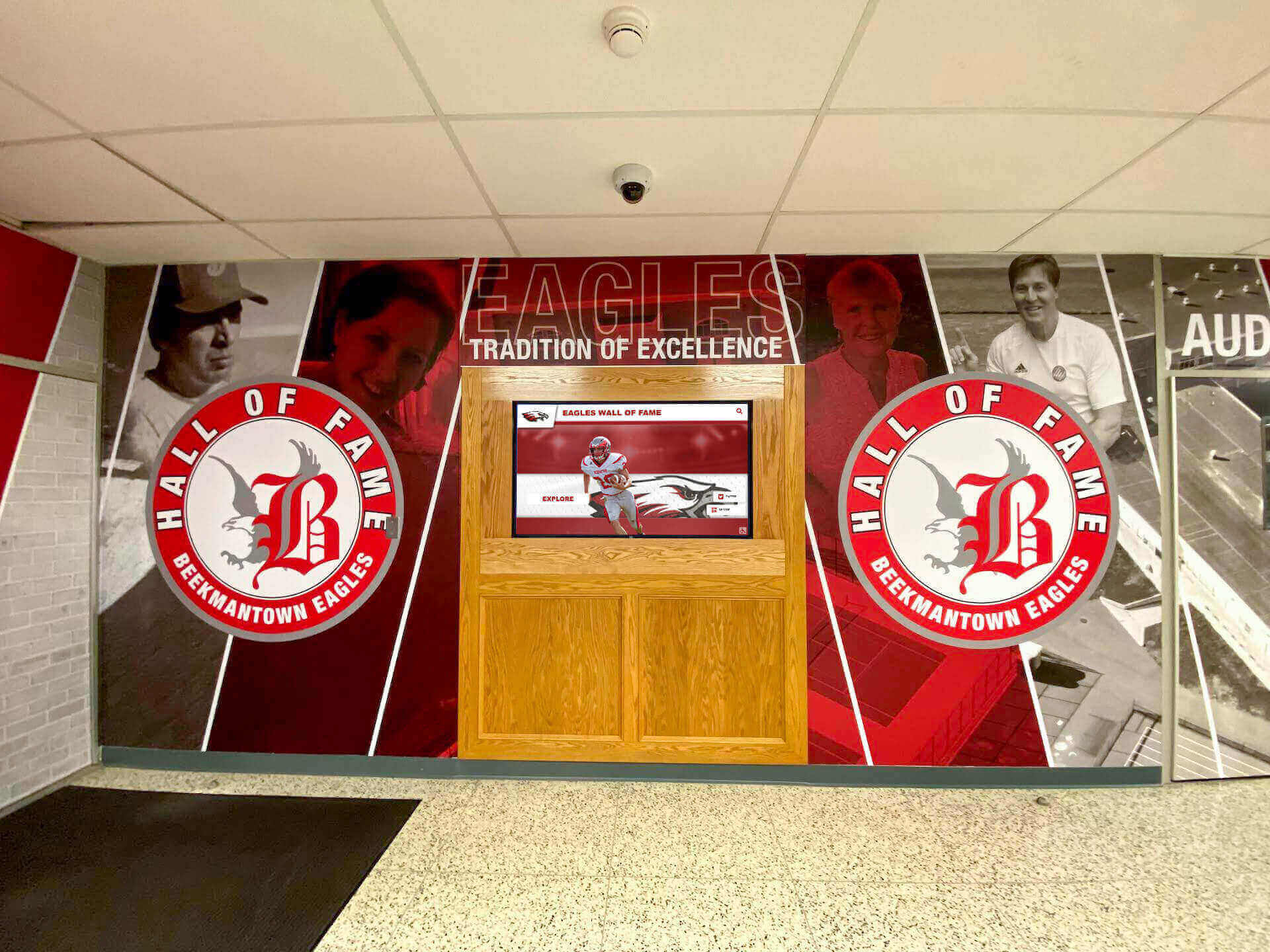
Age-Appropriate Design and Content
Middle school recognition requires different approaches than elementary or high school contexts.
Design Considerations for Middle School:
- Visual designs matching middle school aesthetics (more sophisticated than elementary, less formal than high school)
- Color schemes and graphics appealing to 10-15 year age group
- Interface navigation intuitive for students with varying technological proficiency
- Content organization logical for middle school cognitive development
- Text reading levels appropriate for middle grade students (6th-8th grade reading levels)
- Balance between celebrating achievement and avoiding excessive pressure
- Sensitivity to middle school social dynamics and peer pressure
Content Tone and Voice: Recognition content should be:
- Enthusiastic and celebratory without being condescending
- Authentic and specific rather than generic praise
- Focused on effort and process alongside outcomes
- Inclusive and avoiding comparison between students
- Balanced between individual recognition and team/group recognition
- Age-appropriate in language and cultural references
- Respectful of middle school students’ desire for autonomy and authenticity
Privacy and Sensitivity: Middle school students experience particular sensitivity about public recognition:
- Obtain student and parent permission before featuring students prominently
- Provide options for students uncomfortable with photos or extensive profiles
- Be sensitive to students who may prefer low-key recognition
- Avoid recognition that might increase teasing or negative peer attention
- Consider anonymous recognition options for students in difficult social situations
- Protect information about students receiving special services or accommodations
Hardware Selection for Middle School Environments
Display Size Recommendations:
- Small middle schools (under 400 students): 43-55 inch displays
- Medium middle schools (400-800 students): 55-65 inch displays
- Large middle schools (800+ students): 65-75 inch displays
- Multiple smaller displays often provide better coverage than single large displays
Durability Considerations: Middle school environments require displays that withstand:
- High-traffic areas with frequent bumping or jostling
- Potential for rougher treatment than elementary or high school settings
- Continuous daily operation throughout school years
- Varied environmental conditions (temperature, humidity, dust)
- Potential vandalism or damage requiring protective measures
Protective Measures: Consider protection strategies appropriate for middle school contexts:
- Secure mounting systems preventing displays from being pulled from walls
- Protective glass or covers over screens preventing damage
- Appropriate mounting heights (consider accessibility while preventing easy access for vandalism)
- Locations with adequate staff supervision and sight lines
- Security systems with cameras monitoring high-value equipment if needed
Touchscreen Technology: Capacitive or infrared touch technology provides responsive, reliable interaction. Infrared touch works particularly well for larger displays and accommodates various input methods. Ensure touch response feels immediate and accurate—sluggish or inaccurate touch responsiveness frustrates users and reduces engagement.
For detailed guidance on hardware selection for recognition displays, evaluate factors including commercial-grade reliability, specifications for continuous operation, and total cost of ownership.
Content Development Timeline
Realistic Implementation Timeline:
Phase 1: Planning (Weeks 1-3):
- Form recognition board committee including administrators, teachers, students, and parent representatives
- Define recognition categories and criteria aligned with school values
- Develop content collection processes and templates
- Establish content standards and approval processes
- Identify initial students for recognition across diverse categories
- Schedule photography and content collection activities
Phase 2: Data Collection (Weeks 4-7):
- Photograph students for recognition (professional photos when possible, candid action photos as supplements)
- Collect achievement information from teachers, coaches, activity sponsors
- Gather student quotes, reflections, or statements when appropriate
- Compile existing recognition documentation (certificates, awards, competition results)
- Collect teacher or peer testimonials about recognized students
- Organize all collected content for input into system
Phase 3: Content Creation (Weeks 8-11):
- Write recognition content for each featured student
- Edit and process photographs ensuring consistent quality
- Create or edit video content if included
- Design layout templates matching school branding
- Input all content into recognition software platform
- Organize content by category, grade level, time period
- Create engaging home screen and navigation elements
Phase 4: Review and Testing (Weeks 12-13):
- Student and parent review of individual recognition content
- Administrative review ensuring appropriateness and policy compliance
- Technical testing of all interactive features
- Staff training on content management and ongoing updates
- Final edits and corrections based on feedback
- Soft launch with small group testing and feedback
Phase 5: Launch and Promotion (Week 14+):
- Official launch ceremony celebrating recognition program
- Student assembly introducing new recognition system
- Parent communication about recognition board and how students can be featured
- Social media promotion showcasing new recognition platform
- Ongoing content additions and updates establishing regular rhythm
Plan minimum 14-16 weeks from project initiation to public launch for thorough development. Rushed launches with incomplete content diminish impact and create unnecessary work remediating issues after launch.
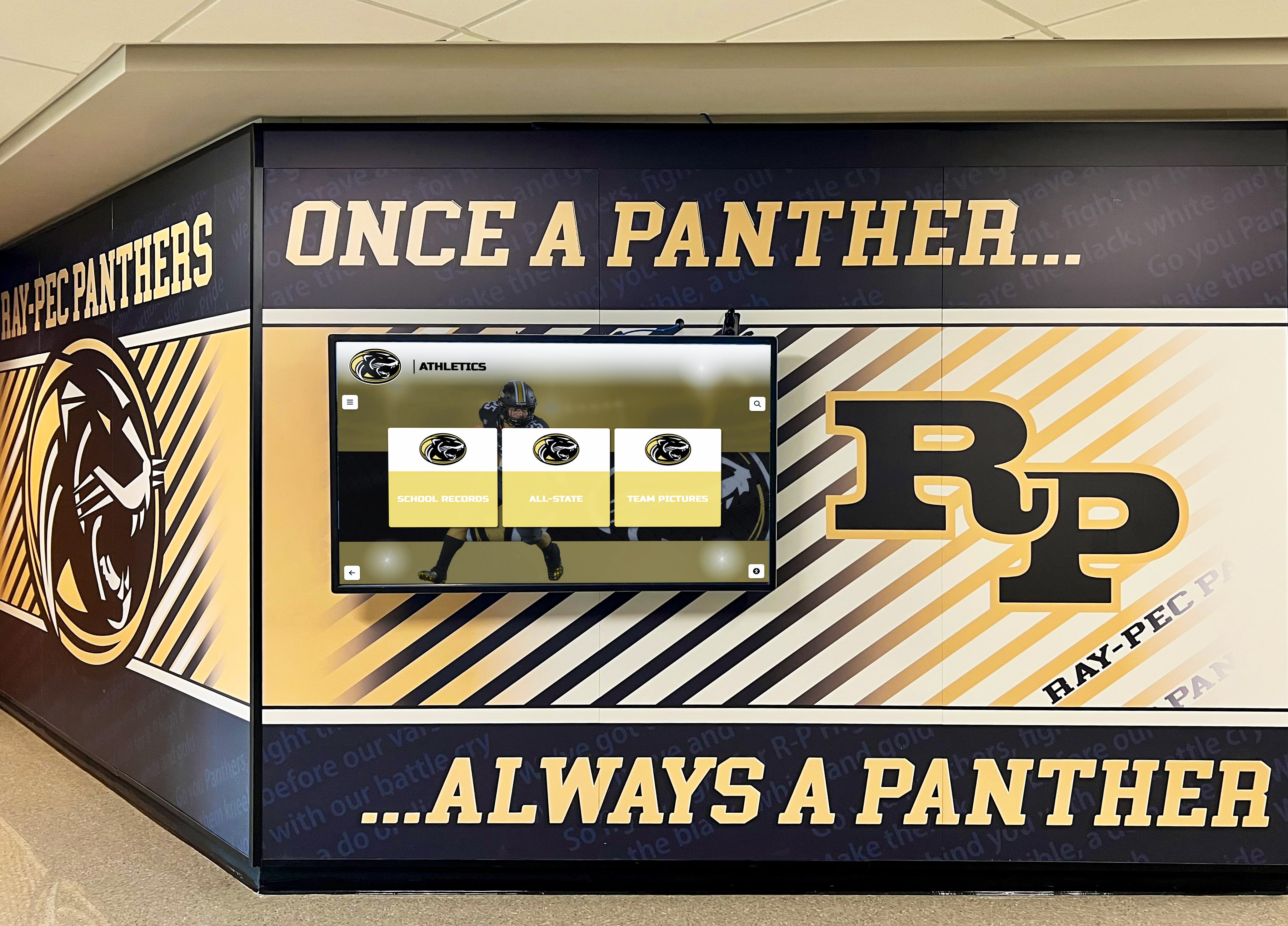
Budget Planning and Funding
Total Cost Components:
Initial Investment:
- Display hardware: $1,500-$4,500 (depending on size and features)
- Touchscreen interface: Included or $400-$1,000
- Media player/computer: $500-$1,500
- Mounting system: $250-$800
- Protective enclosure (if needed): $300-$1,200
- Professional installation: $400-$1,000
- Software platform: $1,000-$3,000 first year
- Content development: $1,500-$6,000
- Training and launch: $300-$800
- Total Initial Investment: $6,000-$20,000
Annual Ongoing Costs:
- Software licensing/subscription: $800-$2,500 annually
- Content management: $600-$2,500 annually (staff time or contracted services)
- Hardware maintenance/warranty: $250-$600 annually
- Network and power: $150-$400 annually
- Content updates (photography, production): $500-$2,000 annually
- Total Annual Costs: $2,300-$8,000
Funding Sources for Middle Schools:
- School general fund or technology budgets
- Parent-teacher organization (PTO/PTA) fundraising projects
- Education foundation grants
- Local business sponsorships or partnerships
- Title funds supporting positive school climate initiatives
- Memorial or tribute donations from families honoring students or staff
- Crowdfunding campaigns engaging broader community
- District recognition program initiatives
- Alumni association contributions
- Service organization grants (Rotary, Lions, Kiwanis)
Phased Implementation: Schools with budget constraints can implement in phases:
- Phase 1: Single display in highest-traffic location with core recognition content
- Phase 2: Expand content categories and add more comprehensive student profiles
- Phase 3: Add additional displays in other locations
- Phase 4: Enhance with advanced features like video content, interactive elements, online companion features
Phased approaches spread costs while allowing learning and refinement based on initial implementation experiences.
Digital recognition platforms like Rocket Alumni Solutions provide purpose-built systems designed specifically for educational recognition, offering content management tools, professional templates, interactive features, and ongoing support that reduce implementation complexity while controlling costs.
Best Practices for Middle School Recognition Boards
Creating Inclusive Recognition Systems
Middle school recognition must deliberately ensure all students see paths to recognition rather than feeling excluded.
Multiple Recognition Pathways: Create diverse recognition categories ensuring students with different strengths, interests, and circumstances can achieve recognition. Beyond academics and athletics, recognize:
- Character and citizenship qualities
- Arts and creative pursuits
- Service and community involvement
- Improvement and growth
- Unique talents and interests
- Positive peer relationships
- Perseverance and resilience
- Leadership in various contexts
Rotating Recognition Features: Regularly rotate featured students ensuring many different students receive prominent placement over school year. Avoid consistently featuring the same high-achieving students while others never appear. Consider systematic rotation ensuring each grade level, each achievement category, and each month features diverse student representation.
Balanced Achievement Standards: Establish recognition criteria that balance excellence with accessibility. While maintaining meaningful standards, ensure recognition isn’t exclusively reserved for absolute top achievers. Recognize:
- Absolute achievement (top performers)
- Significant improvement (growth-oriented)
- Consistent positive behavior (reliability-oriented)
- Exemplary character (values-oriented)
- Meaningful participation (engagement-oriented)
This multi-dimensional approach creates recognition opportunities for students at different starting points and with different strengths.
Behind-the-Scenes Contributors: Recognize students whose contributions happen behind scenes: helpers, supporters, positive influences who may not seek spotlight but make significant differences. Many middle school students contribute meaningfully without seeking attention—recognizing them validates their contributions while demonstrating that schools notice all positive impacts.
Maintaining Fresh, Engaging Content
Stale content kills engagement faster than almost any other factor.
Regular Update Schedule: Establish and maintain consistent content update rhythms:
- Weekly: Add newly recognized students for recent achievements
- Monthly: Feature student spotlights or thematic recognition content
- Quarterly: Comprehensive content review adding new categories or refreshing designs
- Annually: Complete content audit removing outdated content and reorganizing for new school year
Timely Recognition: Update recognition content promptly after achievements occur. Recognition that happens immediately or within days carries far more motivational impact than recognition added weeks or months later. Real-time or near-real-time recognition demonstrates that schools actively notice and immediately celebrate student success.
Seasonal and Thematic Content: Vary content themes throughout school year maintaining visual interest:
- Fall: Back to school welcomes, fall sports recognition, academic start
- Winter: Winter arts performances, academic semester completion, character focus
- Spring: Spring sports, arts performances, testing encouragement, service projects
- End of year: Year-in-review, promotion recognition, summer achievement previews
Seasonal variations keep displays feeling current and relevant to ongoing school experiences.
Student Content Contributors: Engage students in content creation when appropriate:
- Student journalists writing recognition features
- Student photographers capturing recognition-worthy moments
- Student videographers creating video content
- Student interviewers conducting peer interviews for profiles
- Student designers creating graphics or layouts
Student involvement builds skills while creating content that resonates authentically with peer audiences.
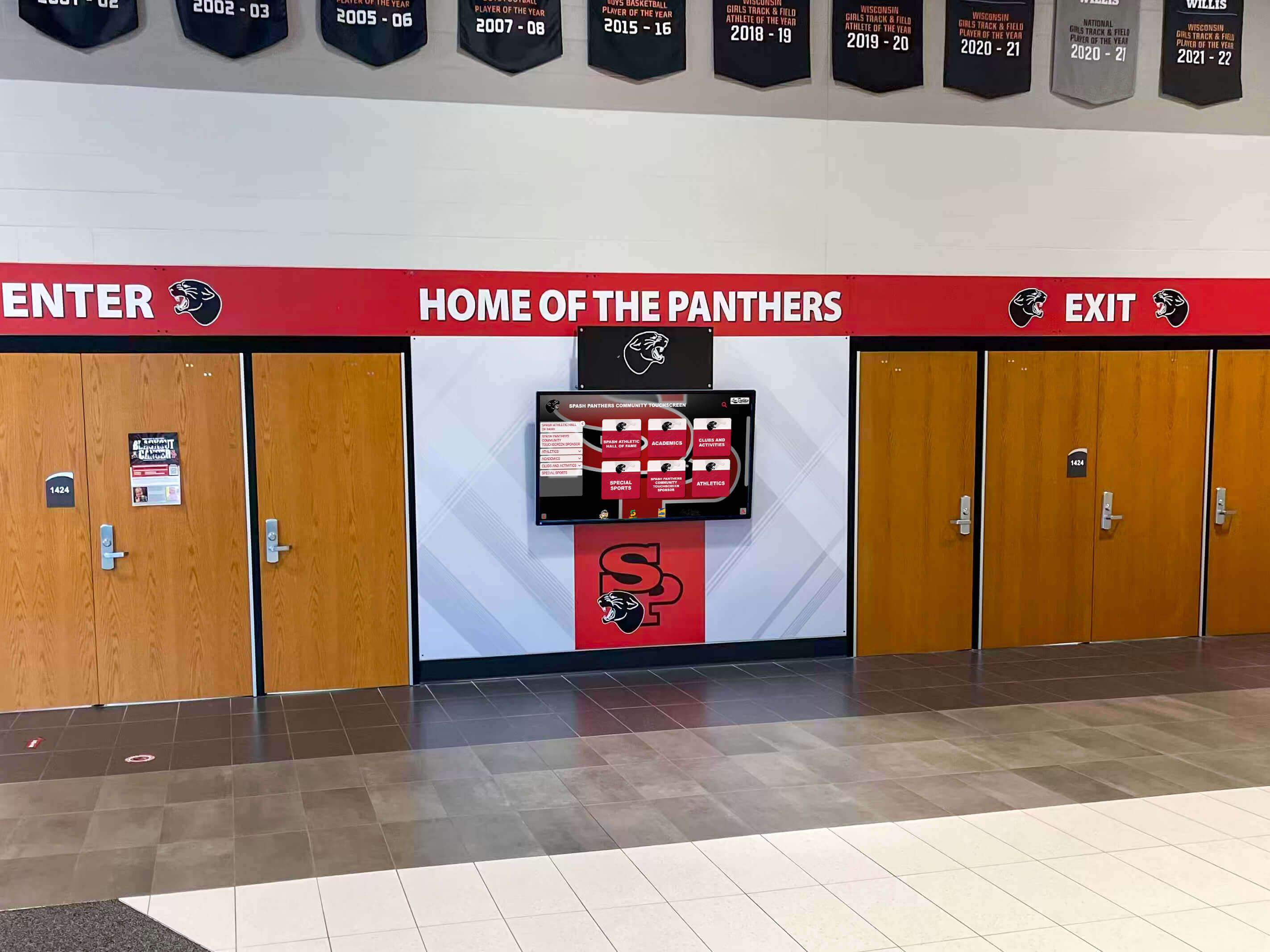
Integrating Recognition with School Culture
Digital recognition boards work best when integrated into comprehensive positive school culture initiatives.
Connection to School Values: Align recognition categories explicitly with stated school values, mission, and vision. Recognition content should consistently reinforce what the school community values most. When students see recognition patterns, they understand institutional priorities and values through concrete examples.
PBIS Integration: For schools implementing Positive Behavioral Interventions and Supports (PBIS), digital recognition boards provide powerful platforms for celebrating students demonstrating expected behaviors. Link recognition content directly to PBIS frameworks, making behavioral expectations and recognition systems mutually reinforcing.
Social-Emotional Learning Connection: Connect recognition to social-emotional learning (SEL) competencies: self-awareness, self-management, social awareness, relationship skills, and responsible decision-making. Feature students demonstrating these competencies, helping entire school community understand what SEL looks like in practice.
Advisory and Homeroom Integration: Use recognition board content as discussion starters in advisory periods or homerooms. Teachers can highlight featured students, discuss achievement paths, explore character examples, or facilitate goal-setting inspired by peer recognition. Integration into advisory structures amplifies recognition impact beyond physical displays.
Family Engagement: Connect families to recognition through:
- Email notifications when their students are featured
- QR codes or links allowing family members to view recognition content remotely
- Invitation to visit displays during school events
- Social media sharing of recognition (with appropriate permissions)
- Recognition ceremonies where families celebrate together
Family connection amplifies recognition impact while strengthening school-family partnerships.
Protecting Privacy and Maintaining Appropriate Boundaries
Permission and Consent: Establish clear consent processes:
- Obtain permission before featuring students in recognition displays
- Provide opt-out options for students or families uncomfortable with public recognition
- Respect cultural or religious preferences around recognition or photography
- Obtain appropriate media release permissions for photos and videos
- Allow students to review content before publication when feasible
Appropriate Content Standards: Maintain professional, appropriate recognition content:
- Focus on positive achievements and qualities
- Avoid content that might embarrass students or increase teasing
- Protect sensitive information about family circumstances, health, special education services
- Maintain age-appropriate language and references
- Avoid comparison language pitting students against each other
- Focus on individual growth and achievement rather than ranking or competition
Safety and Security: Consider safety implications:
- Avoid last names or personally identifying information beyond first names and grade level
- Don’t include addresses, phone numbers, or contact information
- Be particularly cautious with photos showing specific locations
- Follow district policies on student media use
- Ensure content doesn’t reveal information potentially used inappropriately
For schools concerned about student data privacy and security, comprehensive guidance on data privacy and security for digital recognition systems addresses compliance considerations.
Advanced Features and Enhancements
Multimedia Content Integration
Basic recognition boards display photos and text, but multimedia content creates substantially more engaging experiences.
Video Recognition Content: Video brings recognition to life in ways static content cannot:
- Student interviews discussing achievements or goals
- Performance clips from arts performances or competitions
- Athletic highlights showcasing skill and success
- Teacher testimonials explaining why students deserve recognition
- Peer appreciation messages celebrating recognized students
- Behind-the-scenes content showing effort and preparation
Keep videos brief (30-90 seconds) maintaining attention while conveying meaningful content. For comprehensive guidance on creating compelling video content, explore strategies for creating video content for digital recognition displays.
Interactive Elements: Advanced displays incorporate interactive features increasing engagement:
- Search functionality allowing users to find specific students
- Filter options by grade, achievement category, time period
- Quizzes or challenges related to recognition content
- Student input features allowing congratulations messages
- Social sharing capabilities (with appropriate controls)
- Achievement progress tracking over time
Audio Content: Audio elements add another engagement dimension:
- Student voices reading achievement descriptions
- Musical performances from recognized arts students
- Ambient sound creating welcoming environment
- Audio versions of recognition content supporting accessibility
Online Companion Features
Digital recognition boards primarily serve on-site audiences, but online companion features extend reach.
Web-Based Recognition Portals: Complement physical displays with online versions accessible from home allowing:
- Family members to view recognition regardless of physical campus access
- Alumni to stay connected with current student achievements
- Community members to celebrate school successes
- Extended profiles with more comprehensive content than physical displays can show
Mobile Accessibility: Ensure recognition content displays properly on mobile devices where students and families increasingly access information. Mobile-responsive designs accommodate viewing on smartphones and tablets.
Social Media Integration: Strategic social media connection (with appropriate privacy controls) allows:
- Sharing recognition content celebrating school achievements
- Tagging recognized students (with permission) allowing them to share with their networks
- Creating recognition announcement posts driving traffic to physical displays
- Building school pride through visible achievement celebration
QR Code Connections: Generate QR codes displayed near physical recognition boards linking to:
- Extended online profiles with additional content
- Video content too lengthy for display loop
- Submission forms for nomination or recognition suggestions
- Surveys gathering feedback about recognition programs
- School website sections with related content
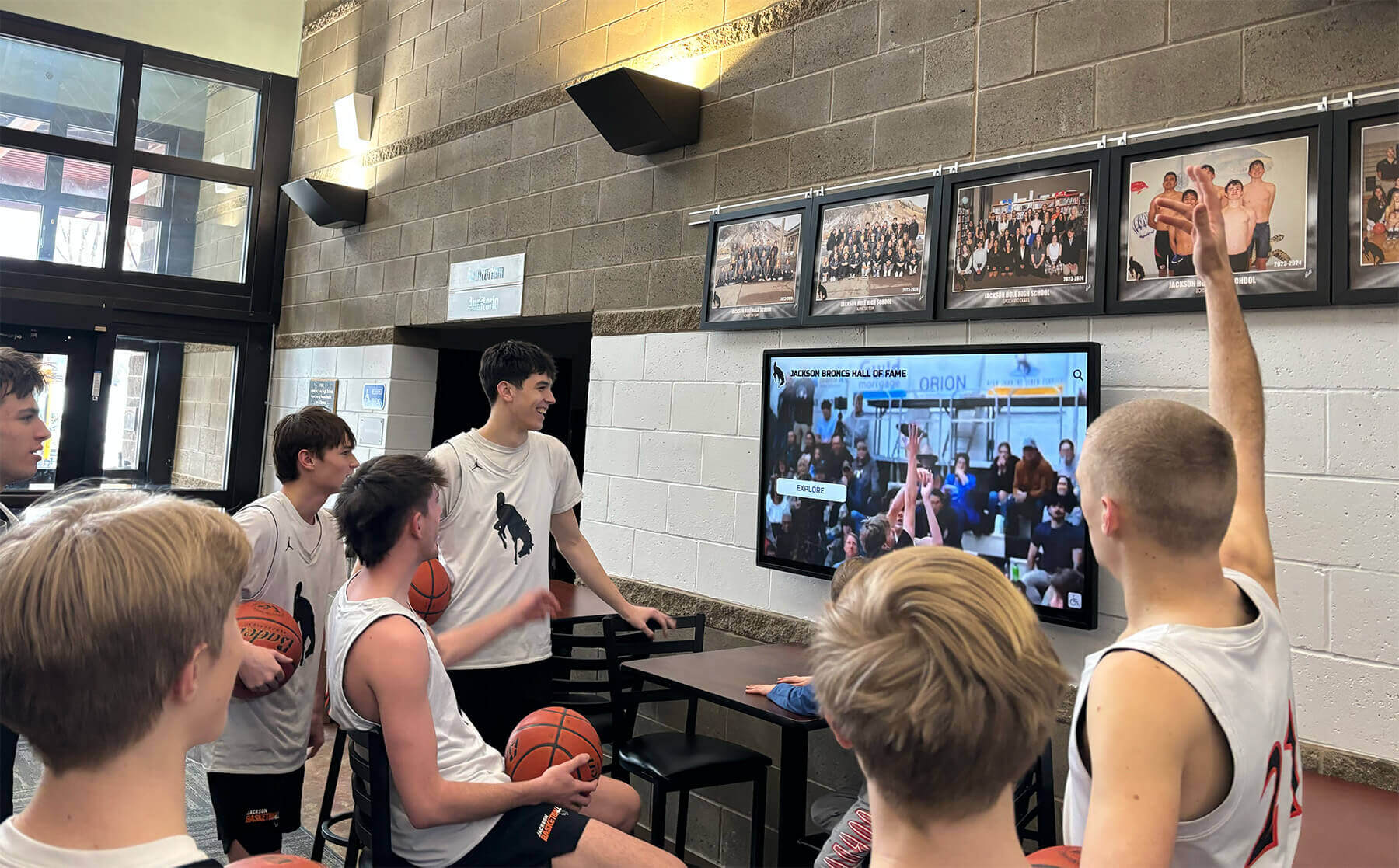
Analytics and Assessment
Modern recognition software provides valuable data about engagement and impact.
Engagement Metrics: Track quantitative engagement data:
- Number of daily interactions with displays
- Average time users spend engaging with content
- Most-viewed students or achievement categories
- Peak usage times and patterns
- Search queries revealing user interests
- Navigation paths showing how users explore content
Recognition Distribution Analysis: Monitor recognition patterns ensuring equity:
- Recognition distribution across grades
- Balance between achievement categories
- Frequency individual students appear
- Representation of different student populations
- Identification of underrepresented groups or categories
Outcome Measures: Connect recognition programs to broader outcome indicators:
- Student survey data about school climate and belonging
- Behavioral data (discipline referrals, attendance)
- Academic outcome trends
- Participation rates in activities and programs
- Student and family satisfaction measures
Use data to continuously improve recognition systems ensuring they achieve intended impacts while serving all students equitably.
Measuring Impact and Success
Quantitative Success Indicators
Engagement Data: Monitor display interaction patterns:
- Increasing engagement over time indicates sustained interest
- High engagement during specific times suggests optimal content update timing
- Popular content types inform future content development
- Low engagement periods suggest needed content refreshes or promotional efforts
Recognition Distribution: Track how recognition spreads across student population:
- Percentage of total student body receiving recognition annually
- Balance across grades, demographics, achievement types
- Students receiving multiple recognitions versus first-time recognition
- Patterns revealing potential gaps or inequities
Institutional Outcomes: Connect recognition to broader institutional measures:
- Student attendance rates
- Behavioral referral patterns
- Academic achievement trends
- Activity participation rates
- School climate survey results
- Parent engagement indicators
While attribution proves difficult given multiple contributing factors, positive trends correlated with recognition program implementation suggest potential program impact.
Qualitative Feedback
Student Perspectives: Gather student feedback through surveys, focus groups, or informal conversations:
- Do students regularly interact with recognition displays?
- How do students feel about recognition they receive?
- What recognition content resonates most?
- What additional recognition categories would students value?
- Do students feel recognition systems are fair and inclusive?
- How has recognition impacted student motivation or school connection?
Family Feedback: Solicit parent and family perspectives:
- Do families discuss recognition when visiting campus?
- How do families respond when their students are recognized?
- Do families feel recognition systems appropriately celebrate their students?
- What improvements would families suggest?
Staff Observations: Document educator perspectives about recognition impact:
- Has school culture shifted toward greater celebration of achievement?
- Do students reference recognition goals or aspirations?
- Has teacher-student relationship quality changed?
- What unexpected benefits or challenges have emerged?
- How might recognition systems better support educational goals?
Continuous Improvement Process
Use assessment data and feedback to refine recognition programs systematically:
Content Optimization:
- Expand popular recognition categories
- Refresh low-engagement content
- Add requested content types or achievement categories
- Improve quality of photos, videos, or written content
- Better balance recognition across student populations
Technical Enhancements:
- Address navigation difficulties users encounter
- Improve search and browsing functionality
- Optimize display performance and responsiveness
- Add requested interactive features
- Expand capacity as content libraries grow
Process Improvements:
- Streamline content collection and creation workflows
- Establish more efficient update procedures
- Improve staff training and support
- Enhance parent and student communication
- Develop better integration with other school systems
Recognition boards should evolve based on evidence about what works in your specific context rather than remaining static after initial implementation.
Conclusion: Building Middle School Communities Through Recognition
Middle school represents a pivotal developmental period where students form academic identities, navigate complex social relationships, develop character, and establish patterns influencing their future trajectories. During these critical years, recognition profoundly shapes how students see themselves, how they connect to school communities, and how they understand what their schools value.
Digital recognition boards provide middle schools with powerful platforms to celebrate diverse student achievements in engaging, inclusive, age-appropriate ways that resonate with digital-native early adolescents. These interactive displays transform recognition from occasional, exclusive events into ongoing, visible, comprehensive celebration systems where all students can see themselves reflected in their school’s story of excellence.
Effective middle school recognition boards balance celebrating exceptional achievement with honoring growth, effort, and character. They feature diverse recognition categories ensuring students with different strengths find paths to celebration. They maintain fresh, timely content demonstrating that schools actively notice student accomplishments. They integrate with broader positive school culture initiatives reinforcing values, supporting social-emotional development, and building inclusive communities where every student belongs.
Key Success Factors for Middle School Recognition Boards:
- Feature diverse achievement categories beyond academics and athletics
- Create recognition opportunities accessible to students at different achievement levels
- Maintain fresh, timely content with regular updates
- Use age-appropriate design, language, and content approaches
- Protect student privacy while celebrating achievements publicly
- Integrate recognition with PBIS, SEL, and school values
- Engage students in content creation when appropriate
- Connect families to recognition through multiple channels
- Monitor recognition distribution ensuring equity and inclusion
- Continuously improve based on data and stakeholder feedback
The investment in digital recognition technology represents more than displays and software—it demonstrates institutional commitment to noticing, valuing, and celebrating every student’s journey. It communicates that middle school is a place where achievements matter, growth is celebrated, character is valued, and every student’s contributions make their community stronger.
Ready to transform student recognition in your middle school? Solutions like Rocket Alumni Solutions provide purpose-built platforms designed specifically for educational recognition, offering intuitive content management, engaging interactive features, and ongoing support that makes celebrating student achievement both meaningful and sustainable. Your middle school students deserve recognition systems matching their achievements—digital recognition boards deliver the engaging, inclusive celebration platforms they need during these formative years.




































